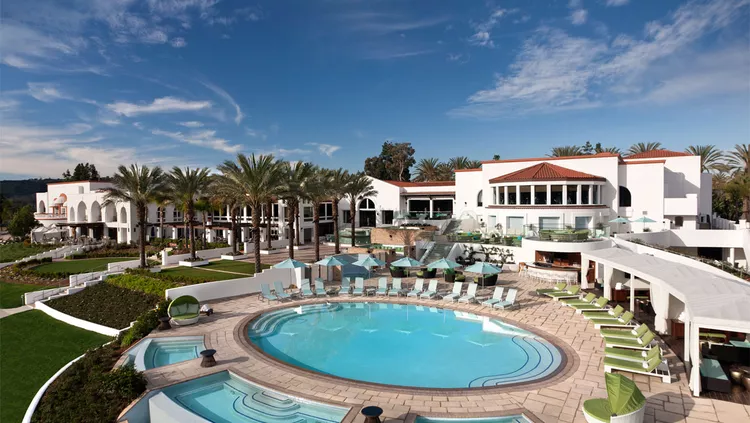Summary
Introduction to Resort Spas
The American resort spa was born in 1965 when La Costa Resort and Spa near San Diego opened its doors. With a fantastic golf course, swimming pools, tennis courts, volleyball courts, and a state-of-the-art spa, La Costa quickly became a family-friendly destination. Here, individuals could enjoy diverse activities: dads could hit the golf course, kids could splash in the pool, and moms could unwind at the spa. Celebrities from Hollywood and the sports world flocked to this resort, ensuring its success.
La Costa borrowed the concept of a spa from its highly successful neighbor, Golden Door, which catered to wealthy women seeking a focused wellness experience. In contrast, La Costa’s spa provided a more inclusive atmosphere suited for families. This innovative approach set a precedent for modern resorts, where luxury spas are now considered essential amenities.
This trend proved so successful that urban hotels and small inns began branding themselves as “spa resorts.” Moreover, even destination spas adapted to this terminology to improve online search visibility. Thus, it becomes crucial to research their offerings to ensure that they align with your expectations.
The Classic Resort Spa
Understanding the traditional distinctions between resort spas and destination spas is important, despite their blurred lines in recent years. The classic resort spa typically serves as an additional amenity within a broader recreational setting, offering golf, tennis, swimming, kids’ clubs, and gyms. Generally, guests pay separately for accommodations, meals, spa treatments, and sometimes exercise classes, although some may be included.
At these spas, guests enjoy a wide range of treatments, including massages, facials, and body treatments, all while having access to lavish facilities that exceed those of a regular day spa. While health-conscious cuisine is often available, visitors are also free to indulge in hearty meals and beverages. The primary objective is relaxation and enjoyment rather than strict health regimens. Importantly, many resort spas welcome local patrons who wish to book treatment appointments.
In contrast, destination spas provide an all-inclusive wellness experience, where guests pay a single rate covering accommodations, healthy meals, exercise classes, outdoor activities, lectures, and personal enrichment sessions. These environments cater particularly well to solo travelers who might feel lost in a larger resort focused on families.
How Resort Spas Differ From Destination Spas
Typically at a resort spa, treatments are purchased a la carte, differing from the package deals offered by destination spas. Furthermore, resort spas may have limited class offerings compared to their destination counterparts.
Exceptions do exist. The Spa at The Boulders and The Spa at Camelback Inn in Scottsdale provide in-depth class schedules free of charge for guests receiving treatments.
While resort spa restaurants often feature spa cuisine, their signature offerings cater to the rich, indulgent dishes favored by diners on special nights out. Consequently, spas have emerged as essential amenities in resorts and hotels, contributing to the widespread assertion that nearly every establishment now boasts a spa.
Thorough research is advisable before making plans for your visit; you would not want to discover that what a hotel labels as a “spa” is merely a hot tub or a single treatment room adjacent to the gym.
What You Need to Know About Resort Spas
- Large resort spas typically provide a range of activities, such as golf, swimming, tennis, and occasionally water sports, horseback riding, or skiing. Many also offer kids’ camps.
- Keep in mind that meals are generally not included at resort spas. This is a significant consideration when comparing prices with destination spas.
- Expect to pay between $15 and $25 for yoga or other fitness classes at resort spas, while classes at destination spas are typically included at no additional cost.
- Kids’ camps are a common feature in resorts, while health-focused spas typically do not accommodate children.
- Stay informed about updated amenities. Older resort spas, built during the 1990s, might not provide the luxurious experience that newer establishments offer.
- Urban hotel spas often lack outdoor amenities and range from the extravagant spas in Las Vegas to more elegant, refined options like The Mandarin Oriental in New York City.
When Resort Spas Are a Good Choice
- When one person wants to engage in golf while another prefers the spa.
- When you desire to have the freedom to eat and drink whatever you prefer.
- When traveling with children is a factor.
- When you are a business traveler who is looking for a convenient way to unwind with a massage.
When Health Spas Are a Good Choice
- If you aim to kickstart a diet or healthy lifestyle.
- If being around like-minded individuals is important to you.
- If you are traveling alone and prefer a focused environment.
- If you need to address specific health concerns.
- If you seek nurturing support following a personal loss.





